-
 Bitcoin
Bitcoin $108,165.4587
0.78% -
 Ethereum
Ethereum $2,456.3517
1.15% -
 Tether USDt
Tether USDt $1.0003
0.00% -
 XRP
XRP $2.1934
0.05% -
 BNB
BNB $650.0935
0.52% -
 Solana
Solana $151.3905
2.69% -
 USDC
USDC $0.9998
0.00% -
 TRON
TRON $0.2751
-0.32% -
 Dogecoin
Dogecoin $0.1640
0.87% -
 Cardano
Cardano $0.5631
0.57% -
 Hyperliquid
Hyperliquid $38.7115
4.69% -
 Bitcoin Cash
Bitcoin Cash $493.1868
-0.39% -
 Sui
Sui $2.8217
3.61% -
 Chainlink
Chainlink $13.3994
2.08% -
 UNUS SED LEO
UNUS SED LEO $9.1632
0.94% -
 Avalanche
Avalanche $18.0318
1.97% -
 Stellar
Stellar $0.2388
0.35% -
 Toncoin
Toncoin $2.8763
1.41% -
 Shiba Inu
Shiba Inu $0.0...01160
1.59% -
 Litecoin
Litecoin $86.6393
1.29% -
 Hedera
Hedera $0.1485
0.16% -
 Monero
Monero $315.7948
1.56% -
 Polkadot
Polkadot $3.4240
1.88% -
 Bitget Token
Bitget Token $4.6314
-0.44% -
 Dai
Dai $0.9998
-0.01% -
 Ethena USDe
Ethena USDe $1.0002
-0.01% -
 Uniswap
Uniswap $7.2110
2.59% -
 Aave
Aave $270.6087
6.07% -
 Pi
Pi $0.5350
0.52% -
 Pepe
Pepe $0.0...09545
1.26%
How to recover funds after leverage trading is forced liquidated? What is Binance's liquidation process?
Leverage trading amplifies returns but risks liquidation if the market moves against you; recover funds by assessing losses, contacting support, and rebuilding with lower leverage.
May 07, 2025 at 07:49 pm
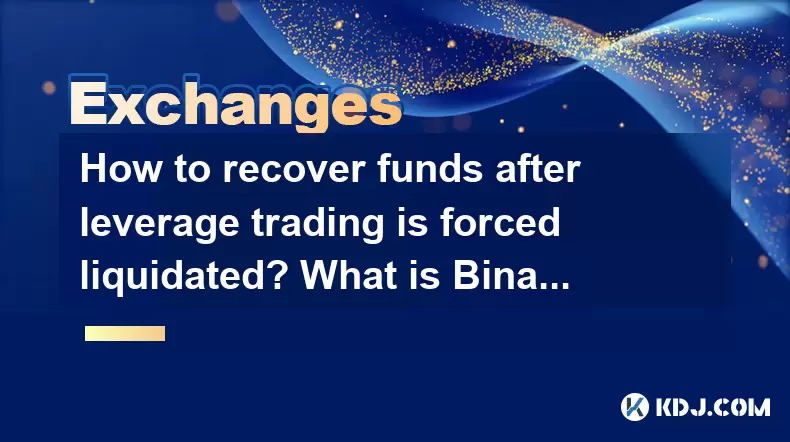
Introduction to Leverage Trading and Liquidation
Leverage trading in the cryptocurrency market allows traders to amplify their potential returns by borrowing funds to increase their trading position. However, this comes with the risk of liquidation if the market moves against the trader's position. Liquidation occurs when a trader's position is automatically closed by the exchange to prevent further losses when the account's margin falls below a certain threshold. In this article, we will explore how to recover funds after a forced liquidation and delve into Binance's specific liquidation process.
Understanding Forced Liquidation
Forced liquidation is a mechanism used by exchanges to mitigate risk. When a trader's position moves into a loss that exceeds the available margin, the exchange will automatically close the position to prevent the trader from owing more than they can afford. The liquidation price is the price at which this automatic closure occurs. It is calculated based on the initial margin, the size of the position, and the maintenance margin required by the exchange.
Steps to Recover Funds After Forced Liquidation
Recovering funds after a forced liquidation can be a challenging process, but there are steps you can take to potentially recover some of your losses:
Assess the Situation: Immediately after a liquidation, review your trading account to understand the exact amount lost and the liquidation price. This information is crucial for planning your next steps.
Contact Customer Support: Reach out to the exchange's customer support team. While they cannot reverse a liquidation, they can provide detailed information about the liquidation process and any fees incurred. This can help you understand if there were any discrepancies or issues with the liquidation.
Review Your Trading Strategy: Analyze what went wrong with your trading strategy. Understanding the reasons behind the liquidation can help you avoid similar situations in the future.
Rebuild Your Position: If you still believe in the trade, consider rebuilding your position with a more conservative approach. Use lower leverage and set tighter stop-loss orders to manage risk better.
Monitor Market Conditions: Keep an eye on market conditions that led to the liquidation. If the market rebounds, you might have an opportunity to recover some of your losses by re-entering the trade at a more favorable price.
Binance's Liquidation Process
Binance, one of the largest cryptocurrency exchanges, has a detailed liquidation process to ensure fair and efficient handling of leveraged positions. Here's how Binance's liquidation process works:
Risk Engine: Binance uses a risk engine to monitor all open positions in real-time. This engine calculates the liquidation price for each position based on the initial margin and the maintenance margin.
Liquidation Price Calculation: The liquidation price is calculated as follows: Liquidation Price = (Entry Price (1 - Maintenance Margin Ratio)) / (1 + (Maintenance Margin Ratio Leverage)). This formula ensures that the position is closed before the account balance becomes negative.
Partial Liquidation: Binance employs a partial liquidation mechanism to minimize the impact on the market. If a position is at risk of liquidation, Binance will first attempt to close a portion of the position to bring the account back within the maintenance margin requirements.
Auto-Deleveraging (ADL): In cases where the market moves too quickly for partial liquidation to be effective, Binance uses an Auto-Deleveraging system. This system matches traders with opposing positions to ensure that the liquidation can be completed without causing significant market disruption.
Liquidation Fees: Binance charges a liquidation fee, which is a small percentage of the position's value. This fee is used to cover the costs associated with the liquidation process.
How to Minimize the Risk of Liquidation
While it's impossible to eliminate the risk of liquidation entirely, there are strategies you can use to minimize it:
Use Lower Leverage: Higher leverage increases the risk of liquidation. By using lower leverage, you can withstand larger market movements without being liquidated.
Set Stop-Loss Orders: Implementing stop-loss orders can help limit your losses. These orders automatically close your position if the market moves against you beyond a certain point.
Monitor Your Positions: Regularly check your open positions and the market conditions. Being proactive can help you adjust your strategy before a liquidation occurs.
Diversify Your Portfolio: Spreading your investments across different assets can reduce the impact of a single position being liquidated.
Understand Margin Requirements: Familiarize yourself with the initial and maintenance margin requirements of your exchange. This knowledge can help you manage your positions more effectively.
Practical Example of Recovering Funds After Liquidation
Let's consider a practical example to illustrate the steps involved in recovering funds after a forced liquidation on Binance:
Scenario: You entered a long position on Bitcoin with 10x leverage at $30,000. The market dropped to $28,000, triggering a liquidation.
Step 1: Assess the Situation: Log into your Binance account and review the liquidation details. You find that your position was liquidated at $28,500, and you lost $1,500.
Step 2: Contact Customer Support: You reach out to Binance's customer support to confirm the liquidation details and understand any fees charged. They confirm the liquidation price and inform you of a 0.5% liquidation fee.
Step 3: Review Your Trading Strategy: You analyze your trading strategy and realize that using 10x leverage was too risky. You decide to use lower leverage in the future.
Step 4: Rebuild Your Position: You wait for the market to stabilize and then enter a new long position on Bitcoin with 2x leverage at $29,000. You set a stop-loss at $28,000 to limit potential losses.
Step 5: Monitor Market Conditions: You keep a close eye on Bitcoin's price movements. If the market rebounds to $31,000, you can close your position and recover some of your initial losses.
Frequently Asked Questions
Q1: Can I dispute a liquidation with the exchange?
A1: While you can contact customer support to discuss the details of your liquidation, it is rare for an exchange to reverse a liquidation. Liquidations are automated processes designed to protect both the trader and the exchange from excessive losses.
Q2: How long does it take to recover funds after a liquidation?
A2: The time it takes to recover funds after a liquidation depends on various factors, including market conditions and your trading strategy. There is no set timeline, and recovery may not always be possible.
Q3: Are there any tools or indicators that can help predict a liquidation?
A3: While no tool can predict a liquidation with certainty, using risk management tools like stop-loss orders and monitoring indicators such as the Relative Strength Index (RSI) and Moving Averages can help you manage your positions more effectively and potentially avoid liquidation.
Q4: Can I use insurance funds to recover losses from liquidation?
A4: Some exchanges, including Binance, have insurance funds to cover losses in extreme market conditions. However, these funds are typically used to cover losses from Auto-Deleveraging and are not directly accessible to individual traders for recovering personal losses from liquidation.
Disclaimer:info@kdj.com
The information provided is not trading advice. kdj.com does not assume any responsibility for any investments made based on the information provided in this article. Cryptocurrencies are highly volatile and it is highly recommended that you invest with caution after thorough research!
If you believe that the content used on this website infringes your copyright, please contact us immediately (info@kdj.com) and we will delete it promptly.
- Do Kwon, Terra (LUNA), Developments: What's the Latest?
- 2025-06-30 04:30:12
- MAGACOIN vs. Dogecoin: Riding the Crypto Growth Wave in 2025
- 2025-06-30 04:30:12
- Dogecoin, Ruvi AI, and Gains: A New Era of Crypto Opportunities?
- 2025-06-30 04:50:12
- BlockDAG's Presale Success: A Crypto Investment Opportunity?
- 2025-06-30 05:30:12
- Crypto Coin Picks: Unveiling Web3 AI, DOT, Render & LINK's Potential
- 2025-06-30 05:30:12
- MicroStrategy, Michael Saylor, and the Bitcoin Buying Binge: Will It Trigger a Supply Shock?
- 2025-06-30 05:35:12
Related knowledge
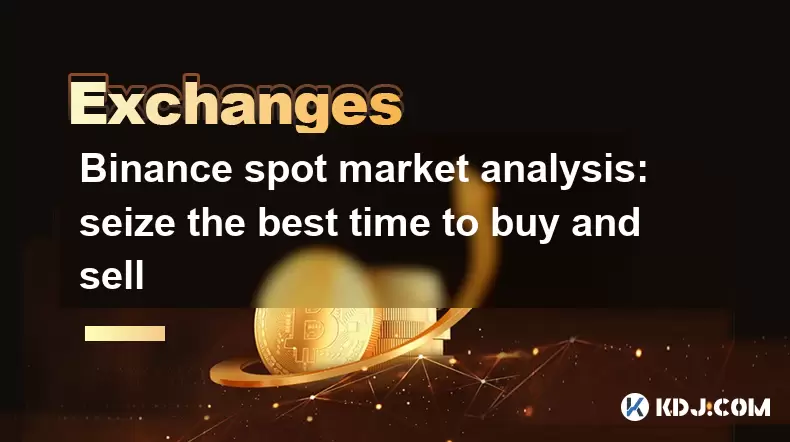
Binance spot market analysis: seize the best time to buy and sell
Jun 19,2025 at 04:56pm
Understanding the Binance Spot MarketThe Binance spot market is one of the most popular platforms for cryptocurrency trading globally. It allows users to trade digital assets at current market prices, making it essential for traders aiming to buy low and sell high. Unlike futures or margin trading, spot trading involves direct ownership of the asset aft...
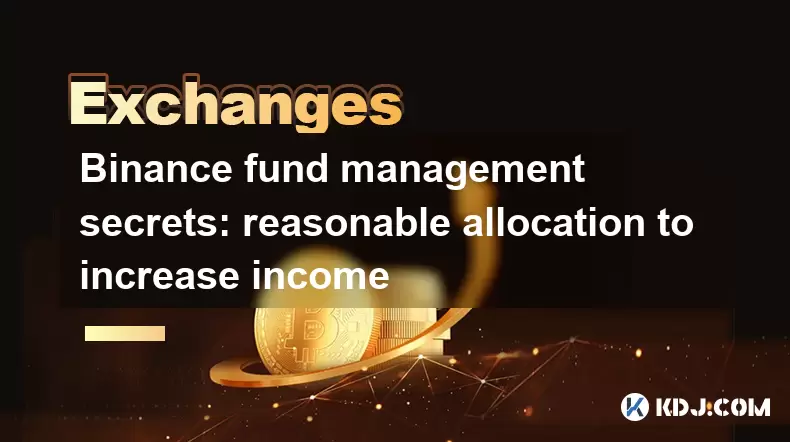
Binance fund management secrets: reasonable allocation to increase income
Jun 22,2025 at 02:29pm
Understanding Binance Fund ManagementBinance fund management involves strategic allocation of your cryptocurrency assets to optimize returns while managing risk. The key to successful fund management lies in understanding how different investment options on the Binance platform can be utilized to create a diversified portfolio. This includes spot tradin...
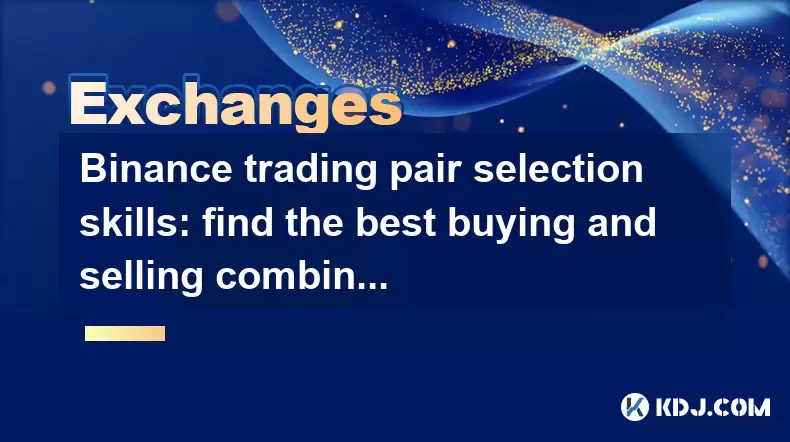
Binance trading pair selection skills: find the best buying and selling combination
Jun 23,2025 at 02:49am
Understanding the Basics of Trading Pairs on BinanceBefore diving into trading pair selection skills, it's essential to understand what a trading pair is. On Binance, a trading pair refers to two cryptocurrencies that can be traded against each other. For example, BTC/USDT means Bitcoin is being traded against Tether. Each trading pair has its own liqui...
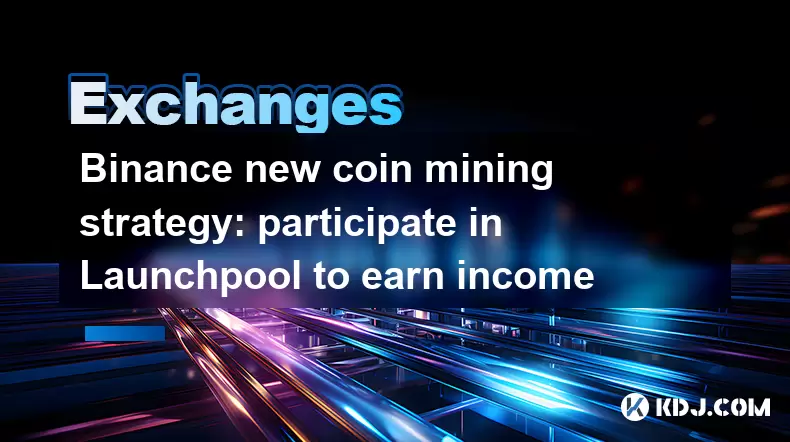
Binance new coin mining strategy: participate in Launchpool to earn income
Jun 23,2025 at 11:56am
What is Binance Launchpool and how does it work?Binance Launchpool is a feature introduced by the world’s largest cryptocurrency exchange, Binance, to allow users to earn new tokens through staking. This platform enables users to stake their existing cryptocurrencies (such as BNB, BUSD, or other supported assets) in exchange for newly launched tokens. T...
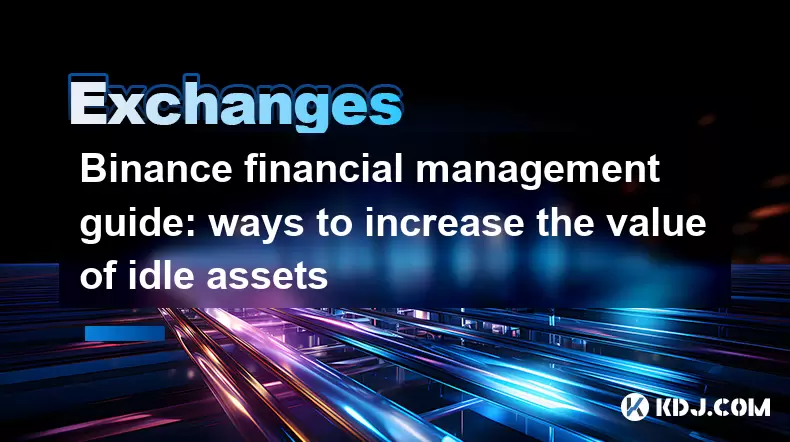
Binance financial management guide: ways to increase the value of idle assets
Jun 19,2025 at 11:22pm
Understanding Idle Assets in the Cryptocurrency SpaceIn the fast-paced world of cryptocurrency, idle assets refer to digital currencies that are not actively being used for trading, staking, or yield farming. Holding these funds in a wallet without utilizing them means missing out on potential growth opportunities. Binance, as one of the leading platfor...
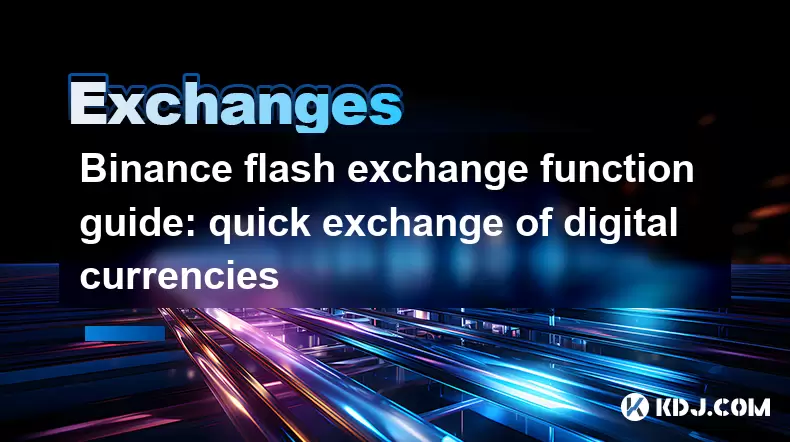
Binance flash exchange function guide: quick exchange of digital currencies
Jun 23,2025 at 12:29pm
What is the Binance Flash Exchange Function?The Binance Flash Exchange function is a powerful tool designed to allow users to instantly swap between supported cryptocurrencies without the need for placing traditional buy/sell orders. This feature simplifies the trading process by offering a direct exchange mechanism, eliminating the requirement to conve...

Binance spot market analysis: seize the best time to buy and sell
Jun 19,2025 at 04:56pm
Understanding the Binance Spot MarketThe Binance spot market is one of the most popular platforms for cryptocurrency trading globally. It allows users to trade digital assets at current market prices, making it essential for traders aiming to buy low and sell high. Unlike futures or margin trading, spot trading involves direct ownership of the asset aft...

Binance fund management secrets: reasonable allocation to increase income
Jun 22,2025 at 02:29pm
Understanding Binance Fund ManagementBinance fund management involves strategic allocation of your cryptocurrency assets to optimize returns while managing risk. The key to successful fund management lies in understanding how different investment options on the Binance platform can be utilized to create a diversified portfolio. This includes spot tradin...

Binance trading pair selection skills: find the best buying and selling combination
Jun 23,2025 at 02:49am
Understanding the Basics of Trading Pairs on BinanceBefore diving into trading pair selection skills, it's essential to understand what a trading pair is. On Binance, a trading pair refers to two cryptocurrencies that can be traded against each other. For example, BTC/USDT means Bitcoin is being traded against Tether. Each trading pair has its own liqui...

Binance new coin mining strategy: participate in Launchpool to earn income
Jun 23,2025 at 11:56am
What is Binance Launchpool and how does it work?Binance Launchpool is a feature introduced by the world’s largest cryptocurrency exchange, Binance, to allow users to earn new tokens through staking. This platform enables users to stake their existing cryptocurrencies (such as BNB, BUSD, or other supported assets) in exchange for newly launched tokens. T...

Binance financial management guide: ways to increase the value of idle assets
Jun 19,2025 at 11:22pm
Understanding Idle Assets in the Cryptocurrency SpaceIn the fast-paced world of cryptocurrency, idle assets refer to digital currencies that are not actively being used for trading, staking, or yield farming. Holding these funds in a wallet without utilizing them means missing out on potential growth opportunities. Binance, as one of the leading platfor...

Binance flash exchange function guide: quick exchange of digital currencies
Jun 23,2025 at 12:29pm
What is the Binance Flash Exchange Function?The Binance Flash Exchange function is a powerful tool designed to allow users to instantly swap between supported cryptocurrencies without the need for placing traditional buy/sell orders. This feature simplifies the trading process by offering a direct exchange mechanism, eliminating the requirement to conve...
See all articles

























































































